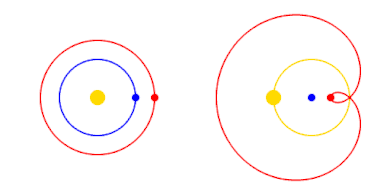| Medieval Students |
 |
Church of St. John the Baptist and St. John the Evangelist- the place of Copernicus' baptism. Near the church there was a school where he attended as a child. |
When Copernicus’ father died his uncle Lucas Watzenrode the Younger took the boy under his wing and became his protector. Thanks to Watzenrode’s financial support Nicolaus Copernicus and his brother Andreas could afford to study on an academic level. Copernicus began his studies in the Department of Arts acquiring the foundations for his subsequent mathematical achievements. The studies gave him a grounding in the mathematical astronomy taught at the University (arithmetic, geometry, geometric optics, cosmography and astronomy) and a good knowledge of the philosophical and natural-science writings of Aristotle. Copernicus' four years in Cracow initiated his analysis of logical contradictions in the two "official" systems of astronomy—Aristotle's theory of homocentric spheres, and Ptolemy's mechanism. Copernicus didn’t get any academic degree, because it would be an obsctacle to study abroad.
 |
| Collegium Maius- the oldest part of the Cracow University |
Without taking a degree, Copernicus left Cracow for the court of his uncle Watzenrode, who wanted to place his nephew in the Warmia canonry. For unclear reasons—probably due to opposition from part of the chapter, Copernicus' installation was delayed, inclining Watzenrode to send both his nephews to study canon law in Italy. Copernicus went to Bologna and signed himself into the register of the Bologna University.
| The Bologna University |
 |
| The University of Padua |
In Padua Copernicus also studied languages. He learnt classical Greek well enough to start translating Simocatta’s Letters. On January 1503 he left Padua for Ferrara to sit a doctoral examination in Canon Law. Here, in May 1503 Copernicus took all the required examinations on Decretes and Decretalia and earned a doctorate in Canon Law, receiving then the following doctoral insignia: a biretta and ring.
Co-author: Karolina Mazurczak, 2F










